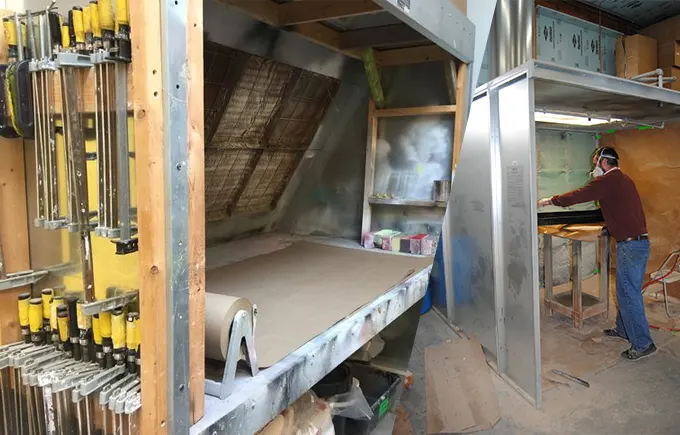In the realm of paint spray booths and industrial paint booths, the quest for efficiency is perpetual. Every aspect of booth design and functionality is scrutinized for its potential to enhance productivity, reduce waste, and improve overall performance. One critical feature that often flies under the radar but plays a pivotal role in achieving these goals is the filtered door. In this comprehensive guide, we’ll delve into the importance of filtered doors in industrial paint booth design and how they contribute to enhancing efficiency in painting operations.
Understanding the Role of Filtered Doors
Filtered doors serve as the primary entry and exit points in industrial paint booths, providing access for personnel, equipment, and workpieces while maintaining environmental control. Unlike conventional doors, filtered doors are equipped with built-in filtration systems that capture overspray, dust, and other airborne contaminants, preventing them from escaping into the surrounding environment. This not only helps to maintain a clean and safe working environment but also ensures compliance with air quality regulations and standards.
Improving Airflow and Containment
One of the primary functions of filtered doors is to improve airflow and containment within the paint booth. By capturing overspray and particulate matter at the entrance and exit points, filtered doors help to maintain negative pressure inside the booth, preventing contaminants from escaping and contaminating adjacent areas. This is especially important in environments where strict cleanliness and contamination control are essential, such as automotive refinishing facilities and aerospace manufacturing plants.
Enhancing Coating Quality and Finish
In addition to improving airflow and containment, filtered doors play a crucial role in enhancing coating quality and finish. By minimizing the presence of airborne contaminants in the painting environment, filtered doors help to reduce the risk of surface defects, such as dust nibs, fisheyes, and orange peel. This results in a smoother, more uniform coating application and a higher-quality finish, ultimately enhancing the overall aesthetic appeal and durability of painted products.
Ensuring Operator Safety and Comfort
Filtered doors also contribute to operator safety and comfort by reducing exposure to hazardous fumes, odors, and airborne particles. The built-in filtration systems in filtered doors help to capture and remove harmful contaminants from the air, creating a cleaner and healthier working environment for booth operators. This not only enhances employee morale and satisfaction but also reduces the risk of respiratory issues and other health-related concerns associated with prolonged exposure to paint fumes and chemicals.
Minimizing Cleanup and Maintenance
Another significant benefit of filtered doors is their ability to minimize cleanup and maintenance requirements in industrial paint booths. By capturing overspray and particulate matter before they have a chance to settle on surfaces, filtered doors help to reduce the frequency and intensity of booth cleaning and maintenance tasks. This not only saves time and labor but also extends the lifespan of booth components and reduces the risk of equipment malfunction or failure due to contamination buildup.
Conclusion
In conclusion, filtered doors are a key feature in industrial paint booth design, playing a crucial role in enhancing efficiency, productivity, and safety in painting operations. By improving airflow and containment, enhancing coating quality and finish, ensuring operator safety and comfort, and minimizing cleanup and maintenance requirements, filtered doors contribute to the overall success and profitability of paint spray booths and industrial paint booths. When investing in a new booth or upgrading an existing one, don’t overlook the importance of filtered doors in achieving optimal performance and results.










